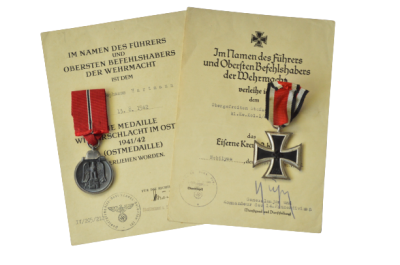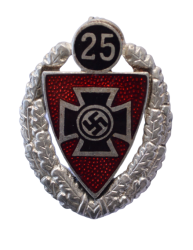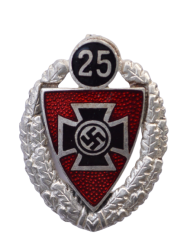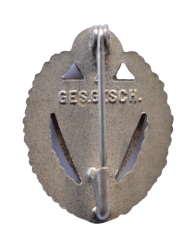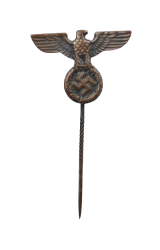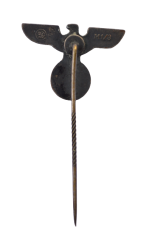Set Awards after Obergefreiten Stefanus Hartman - Pnazerdivision.
Set Awards after Obergefreiten Stefanus Hartman kl.Kw.Kl.1/4 - Pnazerdivision. Iron cross second class unmarked maker Rudolf Wächtler & Lange,Mittweida; East Medal marked 76 maker Ernst Müller, Pforzheim . Paper Award Iron Cross Second Class signed Generalmajor and Komandeur 14. Panzerdivision.
General Friedrich Kühn (7 August 1889 – 15 February 1944) was a General der Panzertruppe in the Wehrmacht during World War II. He was a recipient of the Knight's Cross of the Iron Cross of Nazi Germany. At the start of World War II, Kühn was in command of a tank training school near Berlin, where he had been since 10 November 1938. On 10 February 1940, he took command of the 3rd Panzer Brigade under 3rd Panzer Division, which he led into the Battle of France. On 1 July 1940, he was promoted to Generalmajor. Kühn and his soldiers played a key part in the second stage of the battle, Fall Rot, when they were able to penetrate the French Weygand line on the first day of the offensive to a depth of 15 kilometers, destroyed fourteen artillery batteries and paved the way for the exploitation of the breakthrough. For his decisive leadership on that day Kühn would later be awarded the Knight's Cross on 4 July 1940. In September 1940 he briefly held command of the 3rd Panzer Division in place of its commander Horst Stumpff, who returned to take command on 4 October 1940, and Kühn was appointed commander of the 33rd Infantry Division on 5 October 1940. The 33rd Infantry Division became the 15th Panzer Division on 11 November 1940, with Kühn keeping this command. On 22 March 1941 he traded command of 15th Panzer Division with Generalleutnant Heinrich von Prittwitz und Gaffron, and took command of 14th Panzer Division, which he led into the Invasion of Yugoslavia. Kühn and the 14th Panzer Division participated in Operation Barbarossa as part of 1st Panzer Group under Army Group South, crossing into Russia near Ustyluh on 20 June 1941. The division captured Lutsk on 26 June 1941, reached Rivne by 1 July, and Bila Tserkva by 23 July 1941.
Recently viewed
See also
-
 A 1935 National Day Of Sea Travel Badge By PAUL SCHULZE & CO., LÜBECK. 25.00EUR
A 1935 National Day Of Sea Travel Badge By PAUL SCHULZE & CO., LÜBECK. 25.00EUR Quickview
Quickview -
 A 1935 National Day Of Sea Travel Badge By PAUL SCHULZE & CO., LÜBECK. 20.00EUR
A 1935 National Day Of Sea Travel Badge By PAUL SCHULZE & CO., LÜBECK. 20.00EUR Quickview
Quickview -
 Tag der nationalen Solidarität - Tinnie. 20.00EUR
Tag der nationalen Solidarität - Tinnie. 20.00EUR Quickview
Quickview -
 Hitler Youth (Hj) & German Youth Hostel (Djh) Tinnie 20.00EUR
Hitler Youth (Hj) & German Youth Hostel (Djh) Tinnie 20.00EUR Quickview
Quickview -
 A 1935 HJ German Festival of Youths Badge. 20.00EUR
A 1935 HJ German Festival of Youths Badge. 20.00EUR Quickview
Quickview -
 A 1935 HJ German Festival of Youths Badge. 20.00EUR
A 1935 HJ German Festival of Youths Badge. 20.00EUR Quickview
Quickview -
 A 1936 HJ German Festival of Youths Badge. 20.00EUR
A 1936 HJ German Festival of Youths Badge. 20.00EUR Quickview
Quickview -
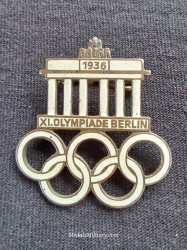 A 1936 Berlin Olympics Badge By Hermann Aurich and Ges. Gesch. 35.00EUR
A 1936 Berlin Olympics Badge By Hermann Aurich and Ges. Gesch. 35.00EUR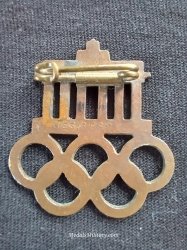 Quickview
Quickview -
 NSDAP Party Badge marked RZM M1/17 maker F.W. Assmann & Sohn. 100.00EUR
NSDAP Party Badge marked RZM M1/17 maker F.W. Assmann & Sohn. 100.00EUR
 Quickview
Quickview -
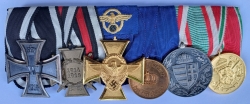 Six Medals Bar Police WWI/WWII. 0EUR
Six Medals Bar Police WWI/WWII. 0EUR

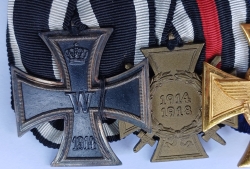
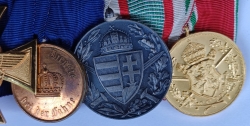
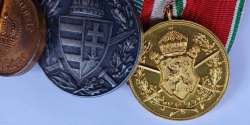

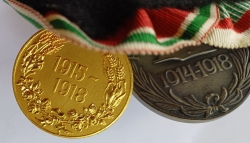

 Quickview
Quickview -
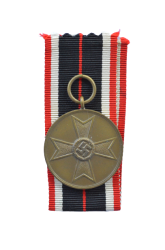 Germany. A War Merit Medal. 0EUR
Germany. A War Merit Medal. 0EUR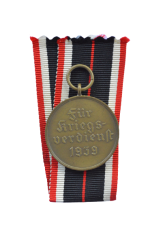 Quickview
Quickview -
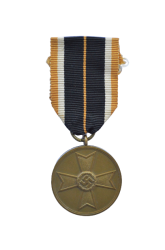 Germany. A War Merit Medal. 0EUR
Germany. A War Merit Medal. 0EUR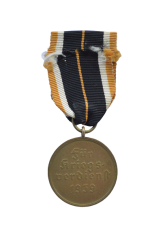 Quickview
Quickview -
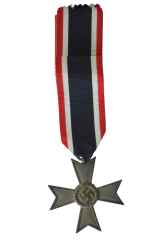 War Merit Cross 2nd Class without Swords marked 107 by Carl Wild, Hamburg. 0EUR
War Merit Cross 2nd Class without Swords marked 107 by Carl Wild, Hamburg. 0EUR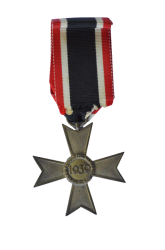 Quickview
Quickview -
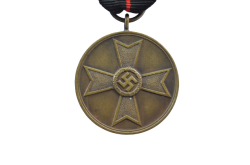 Germany. A War Merit Medal. 0EUR
Germany. A War Merit Medal. 0EUR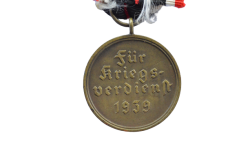
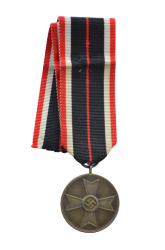 Quickview
Quickview -
SOLD
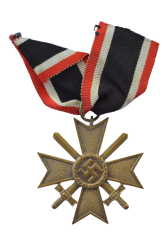 War Merit Cross 2nd Class with Swords marked 83 maker Emil Peukert, Gablonz a.d. Neisse. 35.00EUR
War Merit Cross 2nd Class with Swords marked 83 maker Emil Peukert, Gablonz a.d. Neisse. 35.00EUR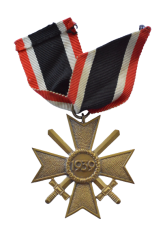 Quickview
Quickview -
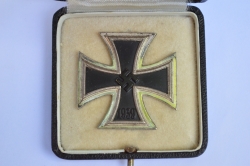 IRON CROSS FIRST CLASS 1939 UNMARKED 100, NONMAGNETIC BY RUDOLF WÄCHTLER & LANGE, MITTWEIDA. 0EUR
IRON CROSS FIRST CLASS 1939 UNMARKED 100, NONMAGNETIC BY RUDOLF WÄCHTLER & LANGE, MITTWEIDA. 0EUR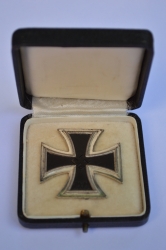
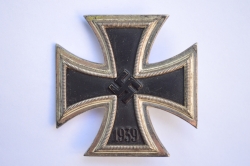
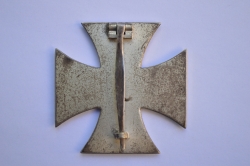
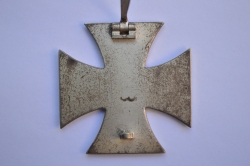
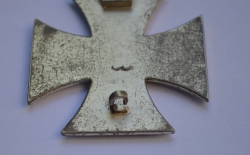
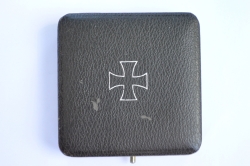
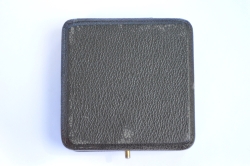
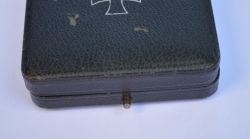
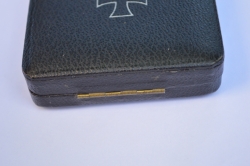 Quickview
Quickview -
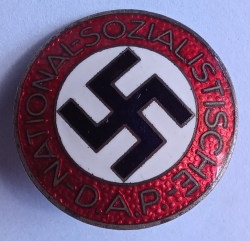 Original German NSDAP Party Enamel Membership Badge Pin by E.L. Müller of Pforzheim - RZM M1/27 0EUR
Original German NSDAP Party Enamel Membership Badge Pin by E.L. Müller of Pforzheim - RZM M1/27 0EUR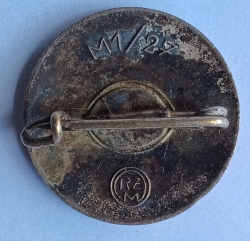 Quickview
Quickview -
SOLD
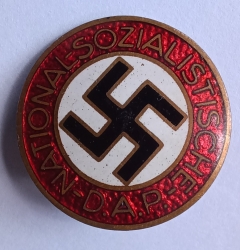 NSDAP party badge – RZM M1/137 Richard Simm & Söhne, Gablonz 115.00EUR
NSDAP party badge – RZM M1/137 Richard Simm & Söhne, Gablonz 115.00EUR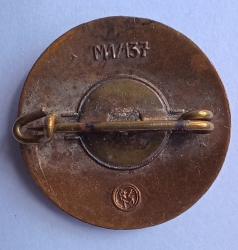 Quickview
Quickview -
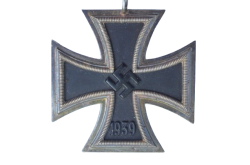 Iron Cross Second Class 1939 marked 15 of maker Friedrich Orth, Wien (Austria). 0EUR
Iron Cross Second Class 1939 marked 15 of maker Friedrich Orth, Wien (Austria). 0EUR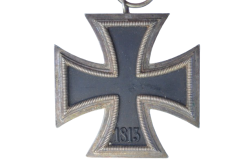
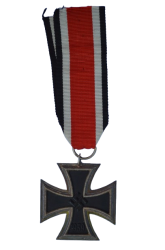 Quickview
Quickview -
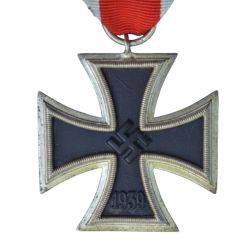 Iron Cross Second Class 1939 marked 40 of maker Berg & Nolte, Lüdenscheid. 0EUR
Iron Cross Second Class 1939 marked 40 of maker Berg & Nolte, Lüdenscheid. 0EUR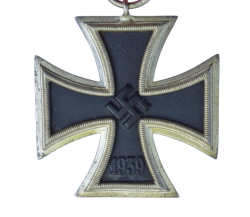
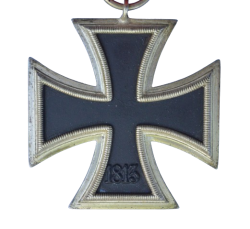
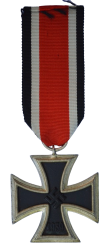
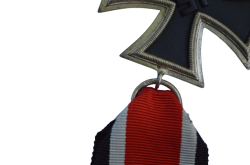 Quickview
Quickview
Featured
-
 A 1936 Berlin Olympics Badge By Hermann Aurich and Ges. Gesch. 35.00EUR
A 1936 Berlin Olympics Badge By Hermann Aurich and Ges. Gesch. 35.00EUR Quickview
Quickview -
 NSDAP Party Badge marked RZM M1/17 maker F.W. Assmann & Sohn. 100.00EUR
NSDAP Party Badge marked RZM M1/17 maker F.W. Assmann & Sohn. 100.00EUR
 Quickview
Quickview -
 Six Medals Bar Police WWI/WWII. 0EUR
Six Medals Bar Police WWI/WWII. 0EUR







 Quickview
Quickview -
 Germany. A War Merit Medal. 0EUR
Germany. A War Merit Medal. 0EUR Quickview
Quickview -
 Germany. A War Merit Medal. 0EUR
Germany. A War Merit Medal. 0EUR Quickview
Quickview -
 War Merit Cross 2nd Class without Swords marked 107 by Carl Wild, Hamburg. 0EUR
War Merit Cross 2nd Class without Swords marked 107 by Carl Wild, Hamburg. 0EUR Quickview
Quickview -
 Germany. A War Merit Medal. 0EUR
Germany. A War Merit Medal. 0EUR
 Quickview
Quickview -
SOLD
 War Merit Cross 2nd Class with Swords marked 83 maker Emil Peukert, Gablonz a.d. Neisse. 35.00EUR
War Merit Cross 2nd Class with Swords marked 83 maker Emil Peukert, Gablonz a.d. Neisse. 35.00EUR Quickview
Quickview -
 IRON CROSS FIRST CLASS 1939 UNMARKED 100, NONMAGNETIC BY RUDOLF WÄCHTLER & LANGE, MITTWEIDA. 0EUR
IRON CROSS FIRST CLASS 1939 UNMARKED 100, NONMAGNETIC BY RUDOLF WÄCHTLER & LANGE, MITTWEIDA. 0EUR







 Quickview
Quickview -
 Original German NSDAP Party Enamel Membership Badge Pin by E.L. Müller of Pforzheim - RZM M1/27 0EUR
Original German NSDAP Party Enamel Membership Badge Pin by E.L. Müller of Pforzheim - RZM M1/27 0EUR Quickview
Quickview -
SOLD
 NSDAP party badge – RZM M1/137 Richard Simm & Söhne, Gablonz 115.00EUR
NSDAP party badge – RZM M1/137 Richard Simm & Söhne, Gablonz 115.00EUR Quickview
Quickview -
 Iron Cross Second Class 1939 marked 15 of maker Friedrich Orth, Wien (Austria). 0EUR
Iron Cross Second Class 1939 marked 15 of maker Friedrich Orth, Wien (Austria). 0EUR
 Quickview
Quickview -
 Iron Cross Second Class 1939 marked 40 of maker Berg & Nolte, Lüdenscheid. 0EUR
Iron Cross Second Class 1939 marked 40 of maker Berg & Nolte, Lüdenscheid. 0EUR


 Quickview
Quickview -
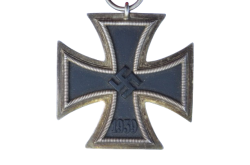 Iron Cross Second Class 1939 unmarked 25 maker Arbeitsgemeinschaft der Graveur- Gold- und Silberschemiedeinnungen. 0EUR
Iron Cross Second Class 1939 unmarked 25 maker Arbeitsgemeinschaft der Graveur- Gold- und Silberschemiedeinnungen. 0EUR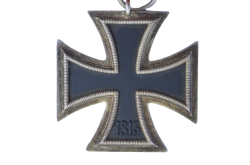
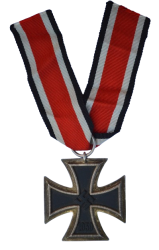 Quickview
Quickview -
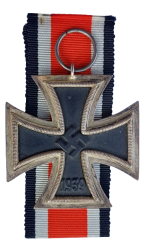 Iron Cross Second Class 1939 of maker Walter & Henlein, Gablonz a.d. Neisse. 0EUR
Iron Cross Second Class 1939 of maker Walter & Henlein, Gablonz a.d. Neisse. 0EUR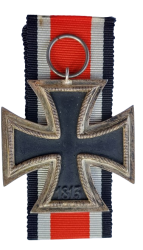 Quickview
Quickview -
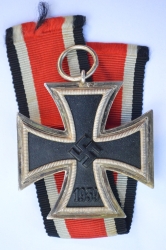 Iron Cross Second Class 1939 unmarked 4 maker Steinhauer & Lück, Lüdenscheid. 0EUR
Iron Cross Second Class 1939 unmarked 4 maker Steinhauer & Lück, Lüdenscheid. 0EUR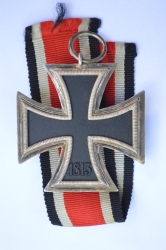 Quickview
Quickview -
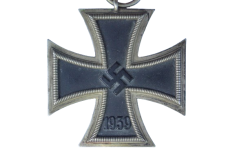 Iron Cross Second Class 1939 maker Otto Schickle, Pforzheim. 0EUR
Iron Cross Second Class 1939 maker Otto Schickle, Pforzheim. 0EUR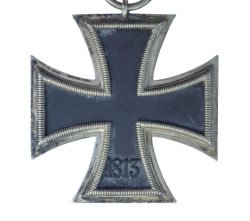
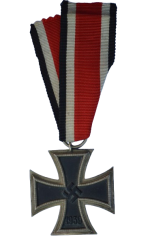 Quickview
Quickview -
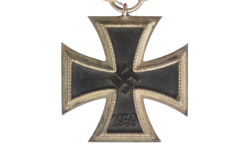 Iron Cross Second Class 1939 unmarked 3 of maker Wilhelm Deumer, Lüdenscheid. 0EUR
Iron Cross Second Class 1939 unmarked 3 of maker Wilhelm Deumer, Lüdenscheid. 0EUR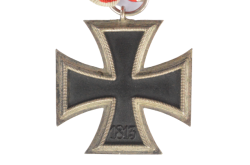
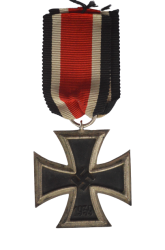 Quickview
Quickview -
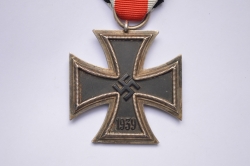 Iron Cross Second Class 1939 unmarked maker Rudolf Souval, Wien. 0EUR
Iron Cross Second Class 1939 unmarked maker Rudolf Souval, Wien. 0EUR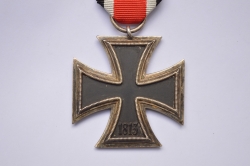
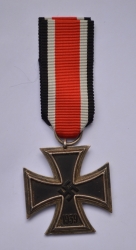 Quickview
Quickview -
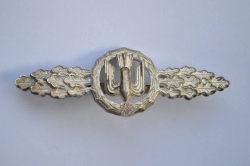 LUFTWAFFE BOMBER CLASP IN SILVER BY RICHARD SIMM & SOHNE "RSS" 750.00EUR
LUFTWAFFE BOMBER CLASP IN SILVER BY RICHARD SIMM & SOHNE "RSS" 750.00EUR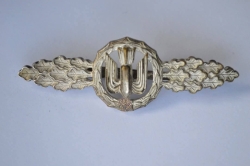
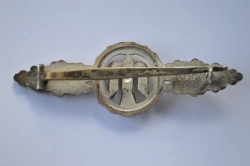
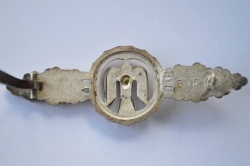
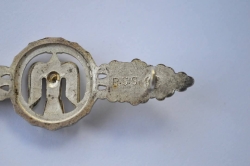 Quickview
Quickview

